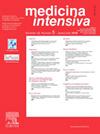ROX指数的预测性能及其对NIV故障的变化
IF 3.1
4区 医学
Q2 CRITICAL CARE MEDICINE
引用次数: 0
摘要
目的利用大型ICU公共数据库,确定ROX指数及其变化是否可以预测ICU患者接受NIV通气的插管风险。设计回顾性观察队列研究。SettingPatient数据从AmsterdamUMCdb和MIMIC-IV ICU数据库中提取,其中包含与20,109和50,920例独特患者相关的数据。无创机械通气。干预措施:对变量进行回顾性分析。为了评估各指标模型的预测价值,根据NIV前12 h内2 h窗期SpO2、呼吸速率、FiO2和PaO2的平均值计算ROX及其变化mROX、ROX- hr和mROX- hr。结果3344例患者符合分析条件,其中1344例患者插管、死亡或在NIV结束后24 h内返回NIV。NIV失败组入院时SOFA评分较高,CRP水平较高。无创通气治疗时间和28天死亡率没有差异,但无创通气失败的患者住院时间更长。在10 ~ 12 h表现最好的指标是ROX, AUROC为0.626。其他所有时间窗指标的鉴别性较差。结论在大型公共ICU数据库中,ROX指数及其变化预测ICU患者NIV失败的表现充其量是中等的,目前还不能推荐用于临床决策支持。本文章由计算机程序翻译,如有差异,请以英文原文为准。
Predictive performance of ROX index and its variations for NIV failure
Objective
To determine whether the ROX index and its variations can predict the risk of intubation in ICU patients receiving NIV ventilation using large public ICU databases.
Design
Retrospective observational cohort study.
Setting
Patient data was extracted from both the AmsterdamUMCdb and the MIMIC-IV ICU databases, which contained data related to 20,109 and 50,920 unique patients.
Patients
Non-invasively mechanically ventilated.
Interventions
Retrospective review of variables.
Main variables of interest
To assess the predictive values of models for each index, the ROX and its variations mROX, ROX-HR and mROX-HR were calculated based on mean values of SpO2, respiratory rate, FiO2 and PaO2 from 2-h windows within the first 12 h of NIV.
Results
3344 patients were eligible for analysis of which 1344 were intubated, died or returned to NIV within 24 h of ending NIV. NIV failure group had higher SOFA scores and higher CRP levels at admission. There was no difference in duration of NIV therapy or 28-day mortality, but patients who failed NIV had longer length of stay. The best performing index was ROX with an AUROC of 0.626 at 10−12 h. All other indices for all other time windows were less discriminating.
Conclusions
The performance of ROX index and its variations to predict NIV failure in ICU patients across large public ICU databases was moderate at best and cannot currently be recommended for clinical decision support.
求助全文
通过发布文献求助,成功后即可免费获取论文全文。
去求助
来源期刊

Medicina Intensiva
CRITICAL CARE MEDICINE-
CiteScore
2.70
自引率
20.00%
发文量
146
审稿时长
33 days
期刊介绍:
Medicina Intensiva is the journal of the Spanish Society of Intensive Care Medicine and Coronary Units (SEMICYUC) and of Pan American and Iberian Federation of Societies of Intensive and Critical Care Medicine. Medicina Intensiva has become the reference publication in Spanish in its field. The journal mainly publishes Original Articles, Reviews, Clinical Notes, Consensus Documents, Images, and other information relevant to the specialty. All works go through a rigorous selection process. The journal accepts submissions of articles in English and in Spanish languages. The journal follows the publication requirements of the International Committee of Medical Journal Editors (ICMJE) and the Committee on Publication Ethics (COPE).
 求助内容:
求助内容: 应助结果提醒方式:
应助结果提醒方式:


